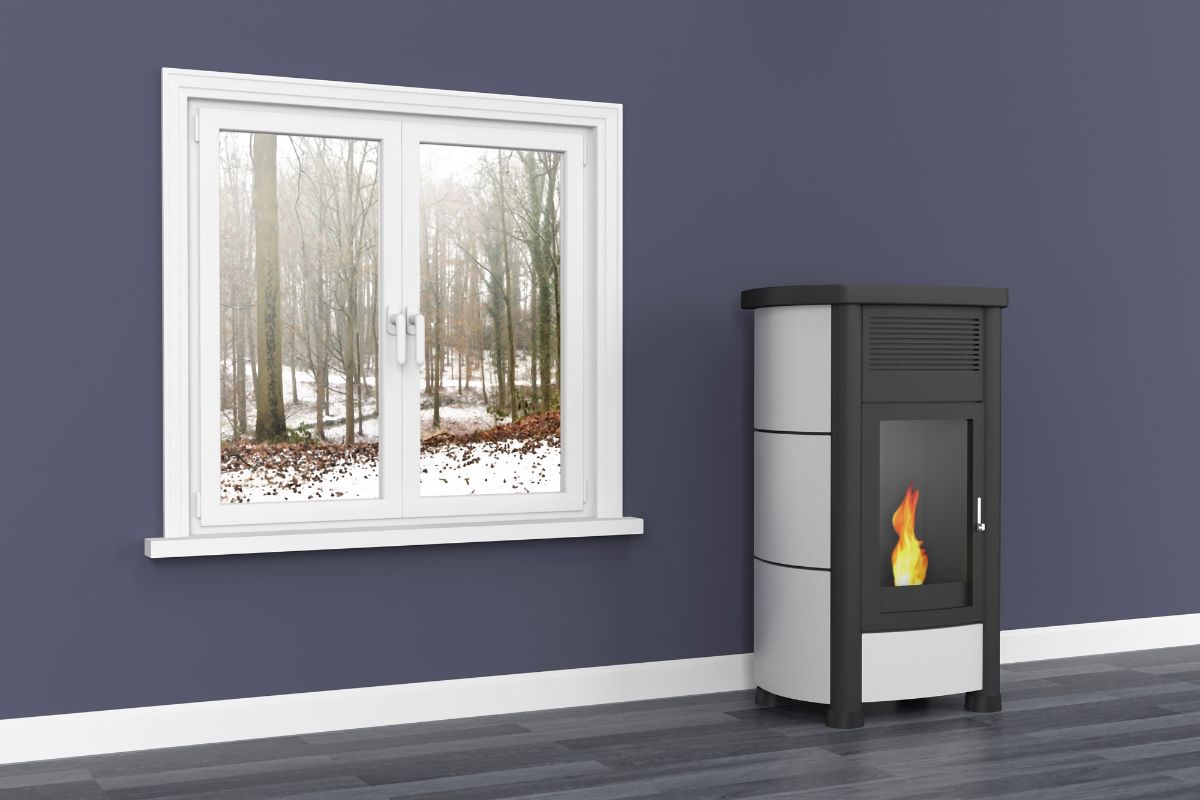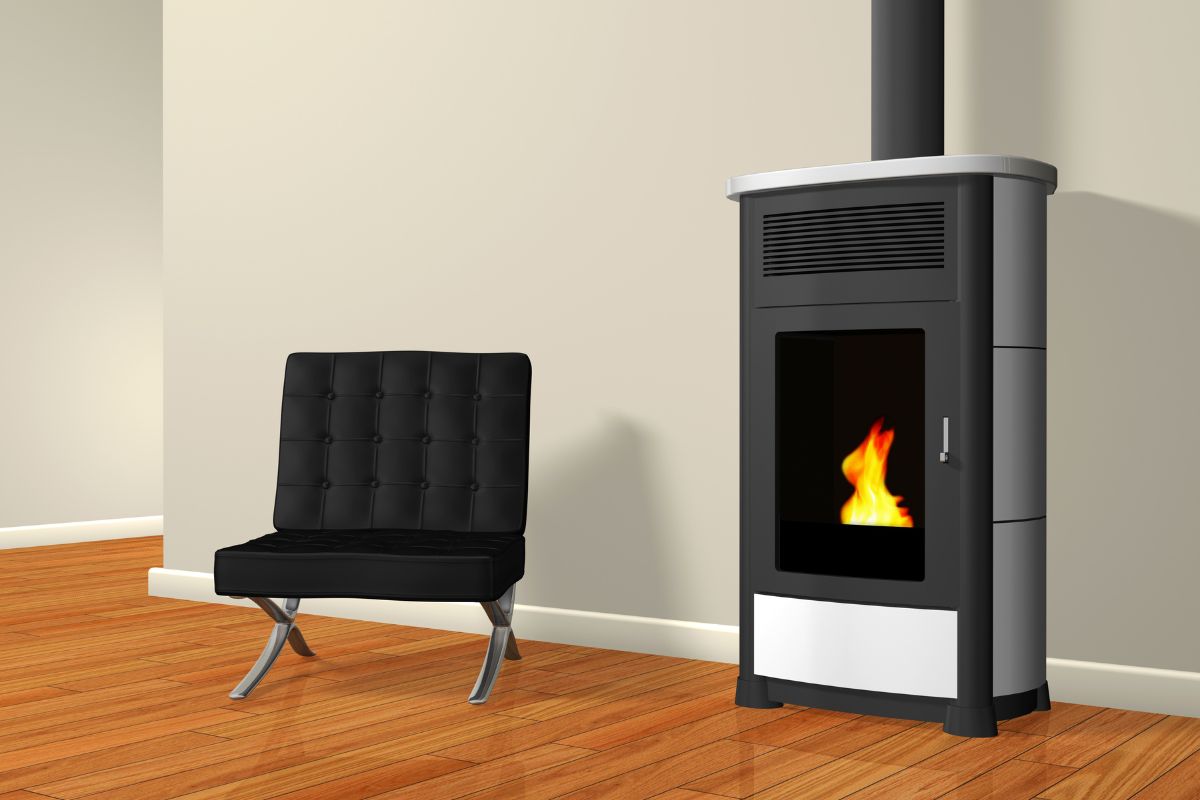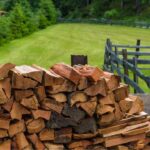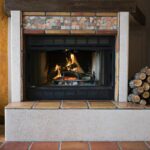When it comes to trying to find an alternative to the usual wood-burning options, then a pellet stove is always a great choice, especially since it doesn’t require you to chop firewood or light any fires, but for those who haven’t used one before, there’s likely going to be a few questions that need to be answered.

One of the most common questions about pellet stoves is whether or not they need a chimney in order to ventilate properly. Getting this right is important, as improper ventilation can be a huge safety hazard in your home.
In this guide, we’ll provide you with all of the information you need to know about pellet stoves, and whether they need a chimney or not.
The Answer
So, getting straight to the point, does a pellet stove actually need a chimney? The simple answer is no.
However, just because a pellet stove doesn’t require a traditional chimney like other wood-burning appliances do, this does not mean that they don’t need somewhere to suitably vent.
This is because when the pellets inside of the stove are burnt, small quantities of smoke and gases are released, which need to be safely vented away.
To do this, pellet stoves usually feature what is known as a “flue”, which is a sort of metal chimney made up of multiple different components, and is attached to the flue socket found on the back of all pellet stoves.
How Are Flues Installed In Your Home?
So, when it comes to installing a pellet stove flue into your home, how does it work? Well, it all depends on the ventilation option you’re going to use in your home, as there are a number of different ways in which you can do it.
Using A Traditional Chimney
If you have a traditional chimney in your home, then you can absolutely use it in order to install a pellet stove.
So, if you want to follow this method for adding a pellet stove to your living space, here’s some general guidance on what you’ll need to do.
You’ll first want to ensure that your chimney has been installed with a chimney flue liner, which is typically the job of a professional, who will be able to ensure that the liner is the correct material and size for your pellet stove.
With this done, you’ll be able to connect the stovepipe to the flue liner using a connector or thimble, before sealing the gaps and the connector/thimble using high-temperature resistant silicone caulk.
Using A Direct Vent
If you don’t have a traditional chimney in your home, then there’s no need to worry, as you’ll still be able to accommodate a pellet stove in your home, but you’ll need to utilize a direct venting method instead.
For this, you’ll need to find somewhere suitable for your stove, which should be a short distance away from a wall that backs onto the outside of your home.
Once you’ve found a suitable location, you’ll need to install a wall thimble, and attach it to the stovepipe of your pellet stove using the appropriate vent adapter.
The vent pipe will then need to run up alongside the external wall of your home, ensuring that it is secured and supported well, and that it meets all of the safety requirements outlined in the code in your local area.
Ventless Pellet Stoves
Although not as common, ventless pellet stoves do exist, and as the name suggests, require no ventilation whatsoever.
Instead, they tend to produce much lower levels of waste air, and utilize an Oxygen Detection Sensor to determine the oxygen levels in the room, which will lead to the stove being turned off if it falls below a certain level.

How Much Space Does A Pellet Stove Need?
As well as the need for adequate ventilation, it’s also important to remember that pellet stoves require a certain amount of clearance and space in order for them to be safe in your home.
Combustibles
One of the first things to consider is that the pellet stove has an adequate amount of clearance in relation to any combustible materials that might be in the room.
This can include anything such as furniture, curtains, walls, and any other objects that could potentially pose a fire risk.
The minimum clearance requirement can range somewhere between 6 and 36 inches, so just be sure that your pellet stove has enough clearance to the combustibles in the room.
Room Size And Stove Size
Another thing to consider when trying to install a pellet stove is the size of the room, whether it’s a small room, or a large open area, by ensuring that you choose an appropriate size of pellet stove for the size room you have, then you should have no issues with ensuring that you have enough clearance for your pellet stove.
Local Building Codes
When installing a pellet stove into your home, you’ll need to ensure that your pellet stove is meeting all of the local requirements found in the local building codes.
You’ll need to contact the authorities in your local area in order to get a better understanding of the exact requirements, but this will help to ensure that you have the proper clearance for your pellet stove.
Final Thoughts
We hope that this guide to pellet stoves and whether or not they need a chimney.
While they don’t necessarily require a traditional chimney, they do still require an adequate amount of ventilation, which they get from the flues found installed at the back of the pellet stove.
By ensuring that your pellet stove has its flue installed properly, as well as plenty of clearance, then you’ll be sure to have a pellet stove that is not only safe, but functional too, allowing you to heat up your room without the need to chop firewood or light any fires!
- How To Open Chimney Flue - July 20, 2023
- Do Electric Fireplaces Use A Lot Of Electricity? - July 20, 2023
- How To Keep A Fire Going - July 20, 2023








